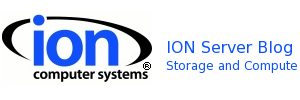SSD vs HDD RAID in Servers and Storage
SSDs in servers deliver performance, whether measured in IOPS or GBps or latency, that is just plain impossible with disks. SSD capacity is now greater than that of performance disks. Price is the factor that still keeps many organizations away from deploying servers with SSD storage when the improved performance is not a significant benefit. The better reliability of SSD might be more important. Continue reading SSD vs HDD RAID in Servers and Storage
